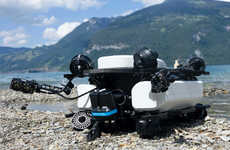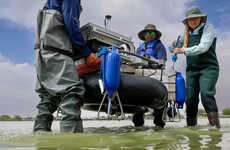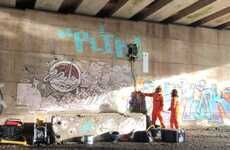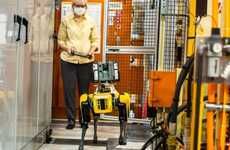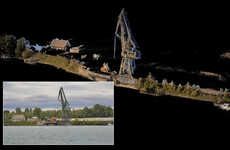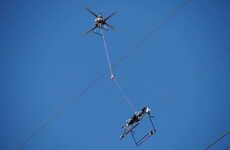
This Autonomous Droid Finds Comprised Construction With Radar and Sensors
Alyson Wyers — June 10, 2017 — Tech
References: unr.edu & springwise
Automation is replacing human workers and eliminating jobs in all sorts of sectors, which could now include bridge inspection. Developed by a robotics team led by Spencer Gibb at the University of Nevada, this bridge-surveying droid detects faults and can determine the health of the structure with a ground-penetrating radar.
The waterproof robot is battery-powered with four wheels and electrical resistivity sensors that search for corroded steel and compromised concrete. Surface cracks can also be seen with its camera.
Following four different tests in three different states, the autonomous contraption proved more accurate than its human bridge inspection counterparts. The construction solution takes the same amount of time to scan bridges, but processes the data at a significantly faster rate.
The waterproof robot is battery-powered with four wheels and electrical resistivity sensors that search for corroded steel and compromised concrete. Surface cracks can also be seen with its camera.
Following four different tests in three different states, the autonomous contraption proved more accurate than its human bridge inspection counterparts. The construction solution takes the same amount of time to scan bridges, but processes the data at a significantly faster rate.
Trend Themes
1. Automation in Bridge Inspection - The development of autonomous bridge inspection robots presents opportunities to automate a traditionally time-consuming and labor-intensive task.
2. Robot-assisted Construction Solutions - The integration of robotic technology into construction processes enables more accurate and efficient inspections, improving the overall quality and safety of infrastructure.
3. Advanced Sensing and Imaging Technologies - The use of ground-penetrating radar, electrical resistivity sensors, and cameras in bridge inspection robots showcases the potential for innovative sensing and imaging technologies in the construction industry.
Industry Implications
1. Robotics - The robotics industry can leverage the development of bridge inspection robots to expand its market reach in the construction and infrastructure sector.
2. Construction - The construction industry can benefit from adopting robot-assisted inspection solutions to streamline and enhance the accuracy of bridge assessments.
3. Technology and Imaging - The advancement of sensing and imaging technologies in the context of bridge inspection creates new opportunities for companies specializing in these areas to provide innovative solutions to the construction industry.
1.9
Score
Popularity
Activity
Freshness




